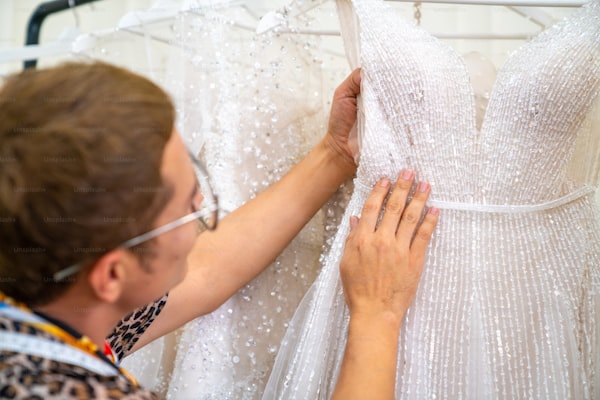How to Effectively Manage Fitting Sessions for a Wedding Dress with Corsetry
How to Effectively Manage Fitting Sessions for a Wedding Dress with Corsetry
Finding the perfect wedding dress is one of the most exciting parts of the wedding planning process. For many brides, this experience is even more special when incorporating corsetry into their dress. However, managing fitting sessions for a Wedding dress with corsetry can be a complex task. In this article, we will explore effective strategies to ensure a smooth and enjoyable fitting process, while addressing common concerns and questions brides may have.
Understanding Corsetry in Wedding dresses
Corsetry refers to the structured framework of a garment, often used to shape and support the body. In Wedding dresses, corsetry can enhance the silhouette, providing support to the bust and creating an hourglass figure. However, finding the right fit can be more challenging than with traditional dresses. Here, we will discuss some critical aspects to consider.
Importance of Choosing the Right Bridal Boutique
The first step in managing fitting sessions is selecting a bridal boutique that specializes in dresses with corsetry. Look for boutiques that have:
- Experienced Staff: Staff members who understand the intricacies of corsetry and can provide expert guidance.
- A Variety of Styles: A diverse selection of dresses to suit different body types and personal styles.
- Positive Reviews: Recommendations or testimonials from other brides regarding their fitting experiences.
Scheduling Your Fitting Sessions
Once you have chosen a boutique, the next step is scheduling fitting sessions. Here are some tips to ensure you get the most out of each session:
Plan Ahead
Make your appointments at least three to four months before your wedding date. This allows ample time for alterations, which are often necessary for corseted gowns.
Be Specific
When booking your appointments, specify that you are looking for a dress with corsetry. This ensures that the boutique can allocate the right staff and resources for your fitting.
Bring Your Essentials
On the fitting day, it’s essential to bring the right items:
- Strapless Bra: This helps you visualize how the dress will look on your big day.
- Comfortable Undergarments: Wear something you feel comfortable in and that fits well under corsetry.
- Appropriate Shoes: Bring the shoes you plan to wear on your wedding day for accurate length measurements.
During the Fitting Session
As you enter your fitting session, keep these tips in mind:
Communicate Openly
Don't hesitate to express your preferences and concerns to the consultant. Discuss what features you love and any discomfort you may experience with the corsetry.
Try Different Styles
The beauty of corseting is its versatility. Be open to trying various silhouettes and styles, as this may lead to unexpected favorites.
Take Measurements
Ensure the consultant takes accurate measurements, especially around the bust, waist, and hips. Corsetry requires precise fitting to achieve the intended look and support.
Handling Adjustments and Alterations
After your initial fitting, alterations are likely necessary. Typically, the following adjustments might be required:
| Adjustment Type | Description |
| Letting Out | If the dress is too tight, especially around the bust or waist. |
| Taking In | If the dress is too loose, making it less supportive. |
| Cup Addition | Adding/removing cups for additional bust support. |
Final Fittings and Bridal Prep
As the wedding day approaches, scheduling final fittings is essential. Aim for these critical aspects:
Timing
Your last fitting should ideally be two weeks before your wedding day. This time frame allows for last-minute adjustments without the risk of weight fluctuations or changes in body shape.
Practice Movement
During your final fitting, practice moving in the dress. Walk, sit, and dance to ensure comfort and support throughout the day. Make sure to adjust your corsetry if necessary to ensure there’s no discomfort.
Addressing Common Concerns
Brides often have concerns about corsetry, such as:
Will Corsetry Affect My Comfort?
While corsetry provides shape and support, it can feel restrictive at first. Choosing a dress with the right level of corsetry for your body type is essential. Additionally, talented seamstresses can help minimize discomfort during fittings.
How Can I Ensure the Dress Fits Perfectly?
Frequent communication with your bridal consultant and proactive involvement during the fitting sessions will be key. Don't hesitate to voice any discomfort or concerns.
What If My Size Changes Before the Wedding?
Weight fluctuations can happen, but most boutiques can accommodate these changes. Make provisions for at least one additional fitting as your wedding approaches.
Conclusion
Managing fitting sessions for a Wedding dress with corsetry may seem daunting, but with the right approach, it can be a rewarding experience. Remember to choose a reputable boutique, schedule your fittings thoughtfully, and communicate openly with your consultants. Keeping an eye on the timeline and being proactive will ensure that your dress fits perfectly for your wedding day. Ultimately, enjoying the process and celebrating your unique style is what truly matters on your special day!

